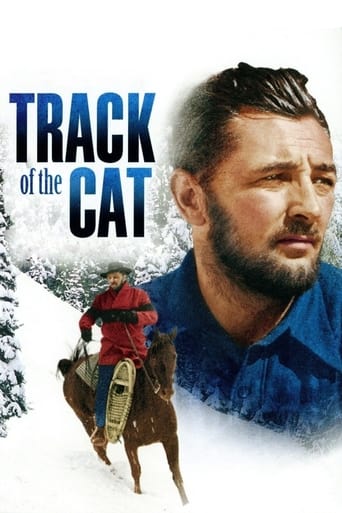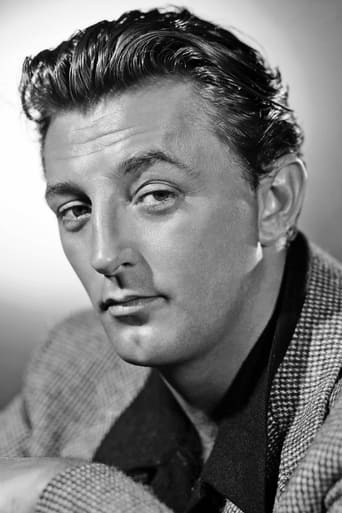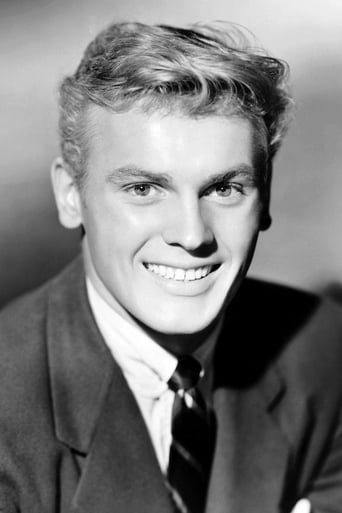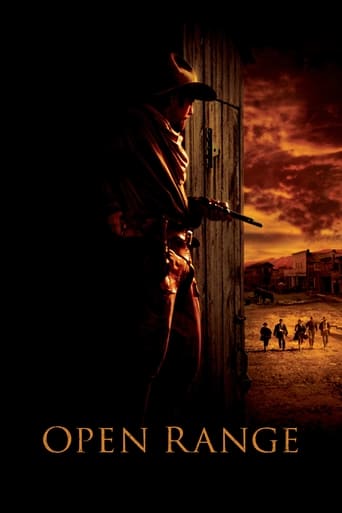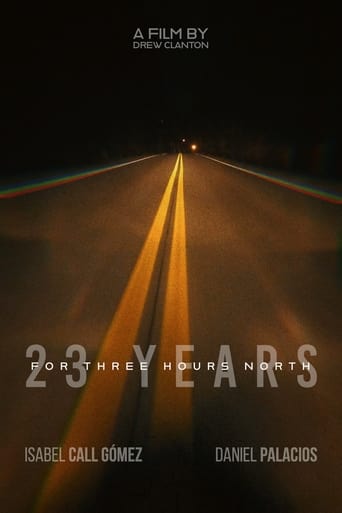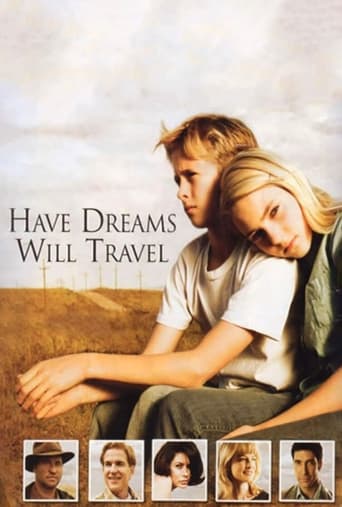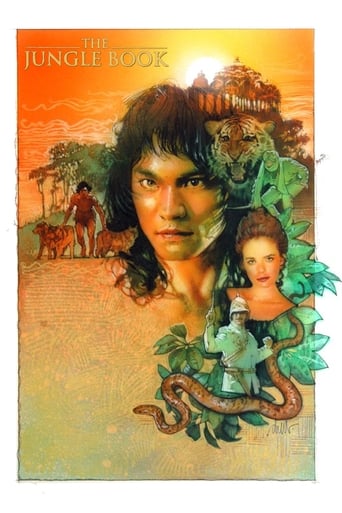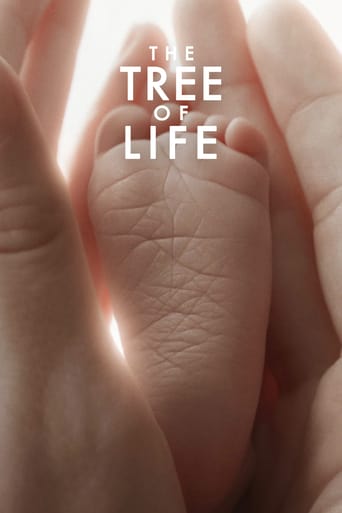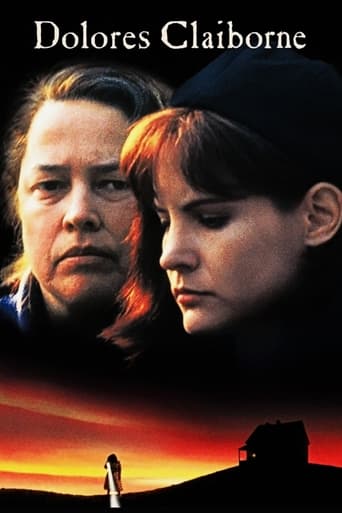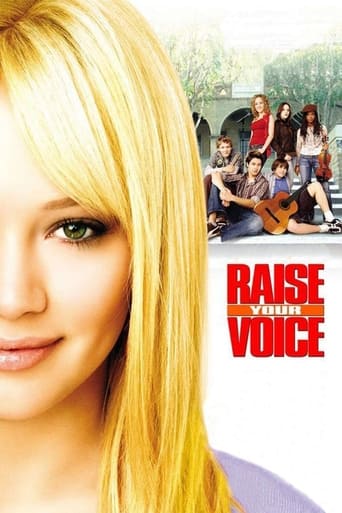Track of the Cat (1954)
A family saga: In a stunning mountain valley ranch setting near Aspen, complex and dangerous family dynamics play out against the backdrop of the first big snowstorm of winter and an enormous panther with seemingly mythical qualities which is killing cattle.
Watch Trailer
Free Trial Channels
Cast


Similar titles
Reviews
Really Surprised!
This movie feels like it was made purely to piss off people who want good shows
There is, somehow, an interesting story here, as well as some good acting. There are also some good scenes
It's a good bad... and worth a popcorn matinée. While it's easy to lament what could have been...
I found TRACK OF THE CAT to be an interesting little character tale from William A. Wellman. The setting is a ranch set in the snowy wilderness, where the inhospitability of the exterior leads to a kind of 'pressure cooker' atmosphere inside. Spearheading the production is an against-type Robert Mitchum playing a really nasty piece of work, a loud-mouthed brute and bully who spends his time browbeating his family members. What follows is slow-paced but rather engaging, with some decent plot twists taking place and lots of suspense.
A family feuds with one another, while a big cat menaces their homestead high up in the Rockies.Ordinarily, I don't follow a clock while watching a movie. I'm sorry to say this one couldn't end soon enough. I still can't figure out how two such gifted writers as novelist Van Tilberg Clark (The Oxbow Incident) and scenarist Bezzarides, (Kiss Me Deadly, {1955}) could come up with such a turgid gabfest as Track.... In short, the movie's a mess. There may be an engaging narrative buried somewhere in all the talk and formless editing, but if so, the patches never come together in coherent fashion. At the same time, that final showdown with the panther comes across more like a poorly staged after-thought than a gripping climax. Given the writing talent, plus ace director Wellman, I suspect the film's basic problem was interference from the executive level.Anyway, it's a waste of Mitchum and Wright, along with some fine alpine scenery and experimental cinematography. On the other hand, there's Phillip Tonge's clownish performance as Pa, an ill-advised attempt at comic relief. At the same time, bobby sox idol Tab Hunter does what he did best on screen: stand still with a blank stare. And just how did "Alfalfa" Carl Switzer end up as the wizened Indian Joe Sam, though he does well enough under a ton of heavy make-up.It's really no fun panning this scenic misfire. It's just that given the talent involved, I was expecting so much better.
Almost an old dark house film set way up in Northern California, this somber drama is an analogy of good and evil, control and bitterness. The story concerns the Bridges clan, a truly unhappy family filled with resentments. Pa is a drunk; Ma is a bible thumping hypocrite. The three sons are in constant conflict, while the only daughter has become a dried up spinster. With the youngest son's fiancée visiting, resentments are at their peak. To make matters worse, an unseen wildcat has been stalking their livestock, so the two oldest sons venture out into the wilderness to kill it. This is not O'Neill, Inge or even updated Shakespeare, even if it seems like a filmed stage play. There is a bit of a "Petrified Forest" feeling to it with the cat taking on Bogart's role, metaphorically holding these people hostage. Carl Switzer is totally unrecognizable as the aged Indian handyman. The performances of the others range from weak (Tab Hunter) to melodramatic (Teresa Wright), with Beulah Bondi standing out as the mother with many layers to her character. As for Robert Mitchum, his imperious character is a fascinating look at a man consumed with controlling his siblings, and the lecherous look he gives Diana Lynn (as Hunter's fiancée) gives the impression that he intends to break one of the ten commandments.The real star of the film, however, is the beautiful Technicolor cinematography, with flashes of color appearing in the snow like a distant star in the sky. Mitchum's red coat is so blatantly blood-like it is almost a metaphor for his character. While based upon a novel, the story seems like an old melodrama from the golden age of traveling theater companies. In many ways, it reminded me of "Mourning Becomes Electra" and some recent western film noirs ("Pursued", also with Mitchum), and "The Furies" (in which Beaulah Bondi had a brief role), as well as "House of Strangers" and its 1954 remake, "Broken Lance". The mood of the film will not be for everyone, but if you follow the story closely and are not put off by its sometimes slow pacing, you may find yourself fascinated by it.
I liked "Track of the Cat" as a "psychological western" and also thought it could be produced as a stage play. The term "painter" is the way pioneers pronounced the word "panther," as I learned in my Indiana History class. The characters in the story view the cat itself as a supernatural and eternal creature that brings evil, death, and sorrow to the innocence of the valley.I found Joe Sam, the 100-year-old Indian portrayed by Alfalfa Switzer, interesting, mysterious, and downright spooky. Drawing on Native American wisdom and folklore, Joe Sam said the panther always came with the first snow, and he implied the panther was an evil spirit or creature that could not die. As the story progresses, the viewer develops mixed feelings about the old Indian's beliefs, as do the members of the Bridge family. Actually, there is a rational explanation for the panther's arrival in the valley: the cattle, deer, and other game had moved into the valley to search for food and water when the snowfall began. Then the panther, which preyed on such animals, followed them. The old Indian, however, expressed his belief in the panther's immortality when he claimed the "same" panther had killed his wife and daughter during a first snow many years ago.I believe the Indian himself symbolizes the conflicts between (1) life and death (2) the eternal and the temporal, (3) the spiritual world and the physical world, and (4) superstition and rational thought. The Bridge brothers stated the old Indian had been a survivor of a battle between settlers and Indians at least 60 years earlier and that all of the Indian's grown sons had been killed in the battle. They estimated the old Indian was at least 40 when his sons died, so that he had to be over 100 years of age. The old Indian's spryness and ability to lift bodies and heavy objects lead the viewer to believe the Indian himself is eternal.The tragic loss of the old Indian's family foreshadows the likelihood the Bridge family also will die out. Mrs. Bridge, the overly controlling mother, has run off all the marriage prospects her grown children have had, and the brothers fear their generation will not marry and have children. The last marriage prospect is the neighbor Gwen, in whom all the brothers have some interest. However, Mrs. Bridge has met her match as Gwen is determined to marry Harold. In the end, life and love triumph over death when Gwen and Harold decide to leave the ranch, get married, and move to Aspen, the symbol of civilization.Mr. Bridge, the alcoholic father, is a sympathetic and comical character throughout the film, retrieving his whiskey bottles from assorted hiding places throughout the house. From his accent I judge him to be an Irish immigrant from a large city in the U.S. Toward the end of the film, Mrs. Bridge finally admits she had persuaded her husband to move to the isolated ranch where he had felt like a "fish out of water" and had taken to drinking. In the end she does admit to being a catalyst for the dysfunction in the family and accepts Harold's wanting to get married and leave the ranch for Aspen.In the scene where Curt (Robert Mitchum) has the fire go out, I am reminded of "To Build a Fire" by Jack London. There is a sort of naturalism in this scene and throughout the film with its man vs. nature theme. I would recommend this film as a very different sort of western.

